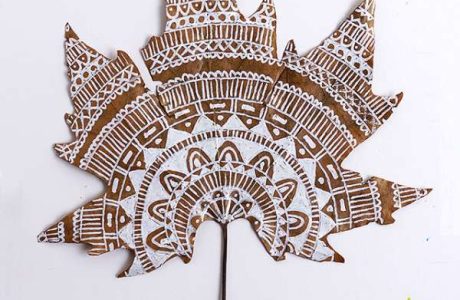
Now that Spring has sprung and the temperatures are warming, we will all be spending more time outside. Use this post from The Garden Glove to build yourself a new bench to sit on outside. Each of the 13 ideas gives a different style and design, so you are sure to find something to fit your own personal style. Take a look through their list and come back and tell us which is your favorite.
Read the post here: 13 Awesome Outdoor Bench Projects
Rustic benches are still going strong but one thing is for sure buying something that is “fake old” is really expensive. Here are some great ways of making your benches look rustic of old.
I started by choosing the right wood. If you’re building the bench from scratch, I recommend using a wood that already has some character—something like pine or cedar. These woods are softer, making them easier to distress, and they take to stains and paints well. If you’ve already got a bench that just needs aging, you’re already a step ahead.
Once the bench was built, the first step in the aging process was to rough it up a bit. I wanted it to look like it had been sitting outside for decades. I used a variety of tools for this: a hammer, nails, chains, and even a wire brush. I hammered the nails randomly into the wood to create small indentations and then dragged the chain across the surface to add more texture. The key here is to be random—don’t overthink it! You want the bench to have natural-looking wear and tear, not something that looks too planned out. I also used the wire brush to rough up the edges and corners, giving them a more weathered appearance.
Next, I used a technique called “dry brushing” to apply a base coat of paint. Dry brushing is when you dip your brush in paint, wipe most of it off on a rag, and then lightly brush the paint onto the wood. I went with a grayish-brown color, something that mimicked the look of aged wood. The trick is to apply the paint in light, uneven strokes so that some of the natural wood still shows through. I used FolkArt Home Decor Chalk Paint in “Parisian Gray,” which you can easily find on Amazon. It’s a great paint for this kind of project because it gives a matte, chalky finish that looks authentically weathered.
After the base coat dried, I added a layer of stain to deepen the color and give the bench that rich, aged look. I used Minwax Wood Finish Penetrating Stain in “Dark Walnut.” This stain is perfect for achieving that warm, old-world feel. I applied it with a clean cloth, wiping it on and then quickly wiping off any excess. The stain settles into the dents and grooves we created earlier, really enhancing that distressed, aged look. Let the stain dry completely before moving on to the next step.
To add even more character, I decided to do a little bit of sanding. I took some medium-grit sandpaper and lightly sanded the edges and corners of the bench, revealing some of the natural wood beneath the paint. This step really brought out that rustic, lived-in look. If you want to go a step further, you can even use a bit of steel wool to give the wood a slightly more worn appearance.
Finally, to protect all that hard work and give the bench a bit of a sheen, I applied a coat of Varathane Satin Water-Based Polyurethane. It’s important to use a satin finish, as it keeps the bench looking natural and not too shiny. This sealant will protect the wood from the elements while still allowing it to age gracefully over time.
And that’s it! The result is a beautiful, rustic bench that looks like it’s been part of the landscape for years. The whole process took me about a weekend, but it was so worth it. The bench now has a ton of character and adds a lovely vintage vibe to my outdoor space. If you’re looking to add some rustic charm to your garden or patio, I definitely recommend giving this aging technique a try. It’s a rewarding project that gives new wood an old soul.



